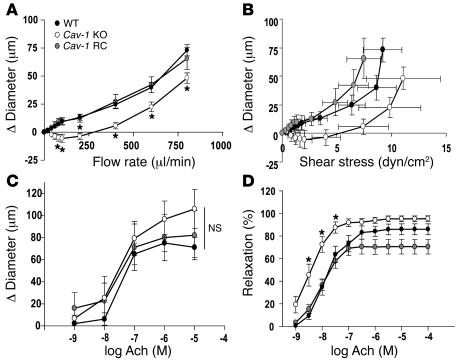Figure 3. Cav-1 is necessary for flow-induced vasodilation, an effect rescued by reconstitution of Cav-1 in the endothelium.
(A) Flow-induced dilations were observed in pressurized isolated carotid arteries from WT (n = 10), Cav-1 KO (n = 8), and Cav-1 RC mice (n = 6). Increases in lumen diameter were expressed as a function of flow rate. The flow-induced dilation was impaired in Cav-1 KO mice compared with WT and Cav-1 RC mice. (B) Increases in lumen diameter (from the same experiments as in A) were expressed as a function of shear stress (measured as dyn/cm2, where 1 dyn = 1 g/cm/s2). (C) Ach-induced dilations were examined after Phe contraction in pressurized isolated carotid arteries from WT (n = 6), Cav-1 KO (n = 9), and Cav-1 RC mice (n = 3). (D) Ach-induced dilations, expressed as percent relaxation of the Phe contraction, were examined in carotid rings from WT (n = 4), Cav-1 KO (n = 4), and Cav-1 RC mice (n = 4) mounted in a wire myograph under isometric conditions. Values are mean ± SEM. *P < 0.05, 2-way ANOVA with Bonferroni post test.

